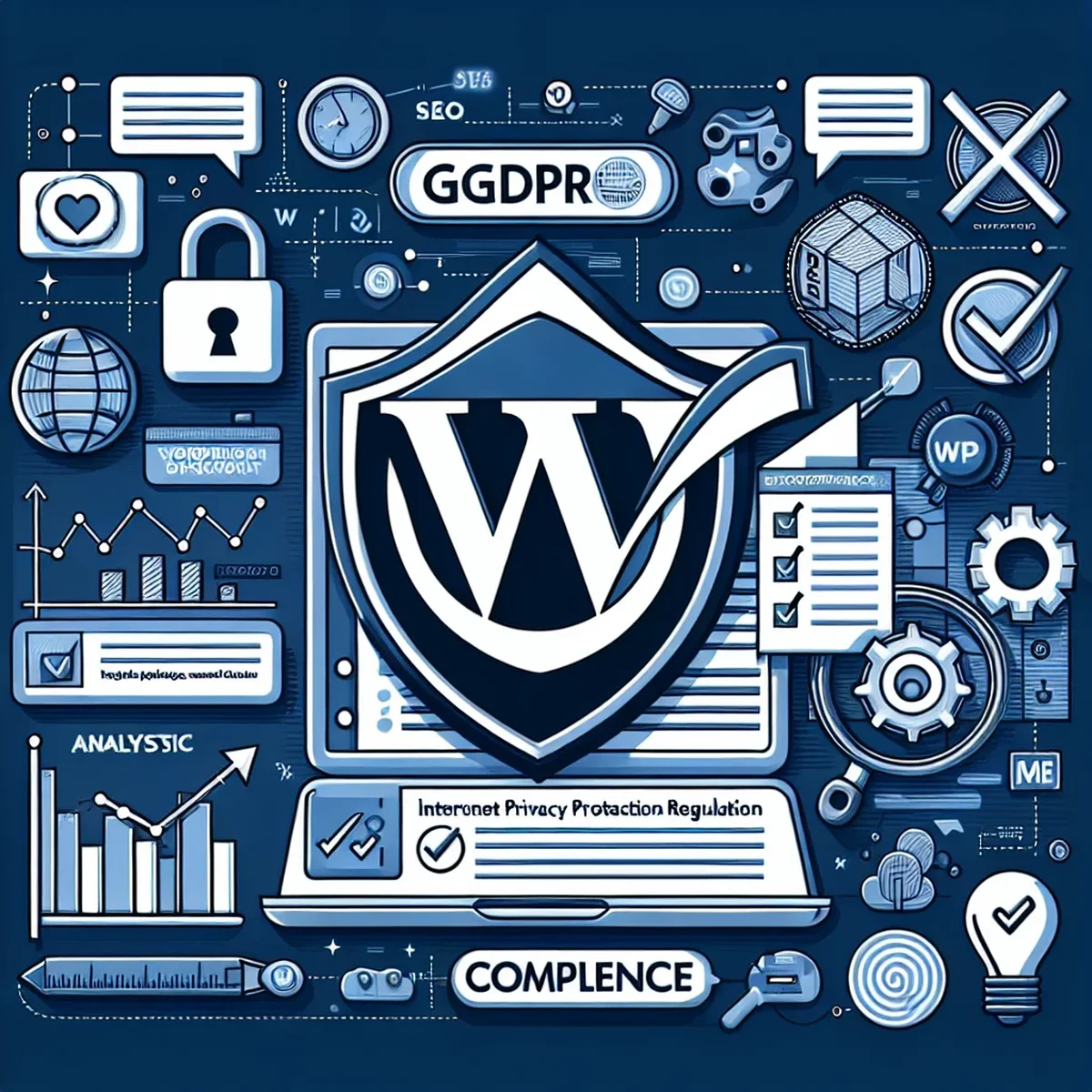Ensuring GDPR Compliance for Your WordPress Website

With the enforcement of the General Data Protection Regulation (GDPR) across the European Union, WordPress website owners face significant obligations regarding data protection and privacy. Non-compliance can lead to severe penalties, making it essential to understand and implement GDPR principles on your WordPress site.
Understanding GDPR Basics
Before diving into the specifics of WordPress and GDPR, it's crucial to grasp what GDPR entails. This regulation enhances personal data protection rights, giving individuals control over their data while imposing strict rules on those hosting and processing this data.
Key GDPR Requirements:
- Consent: You must obtain clear and explicit consent before collecting personal data.
- Right to Access: Individuals can request copies of their personal data.
- Right to Be Forgotten: Individuals can request the deletion of their personal data.
- Data Portability: Individuals can request transfer of their data to another service.
- Privacy by Design: Implement appropriate technical and organizational measures from the start.
Implementing GDPR on Your WordPress Site
Transforming your WordPress site to be GDPR compliant involves several practical steps. Here’s how to approach it:
1. Update Your Privacy Policy
Ensure your privacy policy is thorough, easy to understand, and accessible. It should clearly explain what data you collect, why you collect it, how it's used, and how users can request data deletion or modification.
2. Manage Consent Effectively
Use plugins like WP GDPR Compliance or CookieYes to create customizable consent forms and manage consent logs efficiently. This not only helps in complying with GDPR but also simplifies the process for site administrators.
3. Regularly Audit Your Website
Conduct regular audits to ensure all aspects of your site are compliant. Check for data breaches, outdated content, and non-compliant plugins or themes. Tools like WP Security Audit Log can help monitor and record activities for compliance.
4. Secure Data Transfers
Ensure that any data transfer is secure and compliant with GDPR. If using third-party services or APIs, confirm they adhere to GDPR standards.
GDPR-Compliant Plugins and Tools
Selecting the right plugins can significantly ease the GDPR compliance process. Here are a few to consider:
- WP GDPR Compliance: Streamlines the management of consent and provides tools for user data access requests.
- Complianz: A comprehensive plugin that handles cookie consent, privacy policies, and more.
- CookieYes: Focuses on cookie management and obtaining proper user consents.
Conclusion
Ensuring GDPR compliance for your WordPress site is not just about avoiding fines—it's about respecting user privacy and building a trustworthy digital environment. By following the outlined steps and using the recommended tools, you can significantly enhance your site's compliance and user trust.
Remember, GDPR compliance is an ongoing process. Regular updates and audits are necessary to maintain compliance and protect user data effectively.
FAQ
- What is GDPR and why is it important for WordPress sites?
- GDPR stands for General Data Protection Regulation, a legal framework that sets guidelines for the collection and processing of personal information from individuals in the EU. Compliance is crucial for WordPress sites to avoid hefty fines and build user trust.
- How can I audit my WordPress site for GDPR compliance?
- Start by reviewing how your site collects, uses, and stores personal data. Check if your privacy policy is up-to-date and transparent, and ensure that all plugins and themes are compliant with GDPR guidelines.
- What are the best plugins for GDPR compliance on WordPress?
- Popular plugins include WP GDPR Compliance, CookieYes, and Complianz. These tools help in managing consent, data access requests, and cookie policies, making it easier to adhere to GDPR requirements.